Want to build a portfolio system on monday.com? With the platform’s new Portfolio Management feature, creating a scalable project tracking system is easier than ever, whether you’re managing a few projects or dozens across multiple teams.
In this post, I’ll walk you through how to set up a portfolio system using this new feature, based on a real-world example: a client who buys and refurbishes nursing homes. They’re currently juggling five major renovations and preparing to launch 19 more, so it’s 24 large-scale construction projects in total.
Managing that many projects comes with serious complexity: hundreds of rooms, countless materials, and multiple suppliers per site. They needed a better way to organize it all. The system I built helps their team keep tasks moving and gives leadership full visibility into every project’s progress.
Prefer to watch instead of read? Check out the full tutorial video here:
The Storage Boards for the Portfolio Project
We began by setting up three foundational boards to store the essential data for the entire portfolio system:
- Suppliers Board – A centralized list of all vendors the company works with. It includes contact details, payment terms, and status (active or inactive), making it easy to manage supplier relationships at scale.
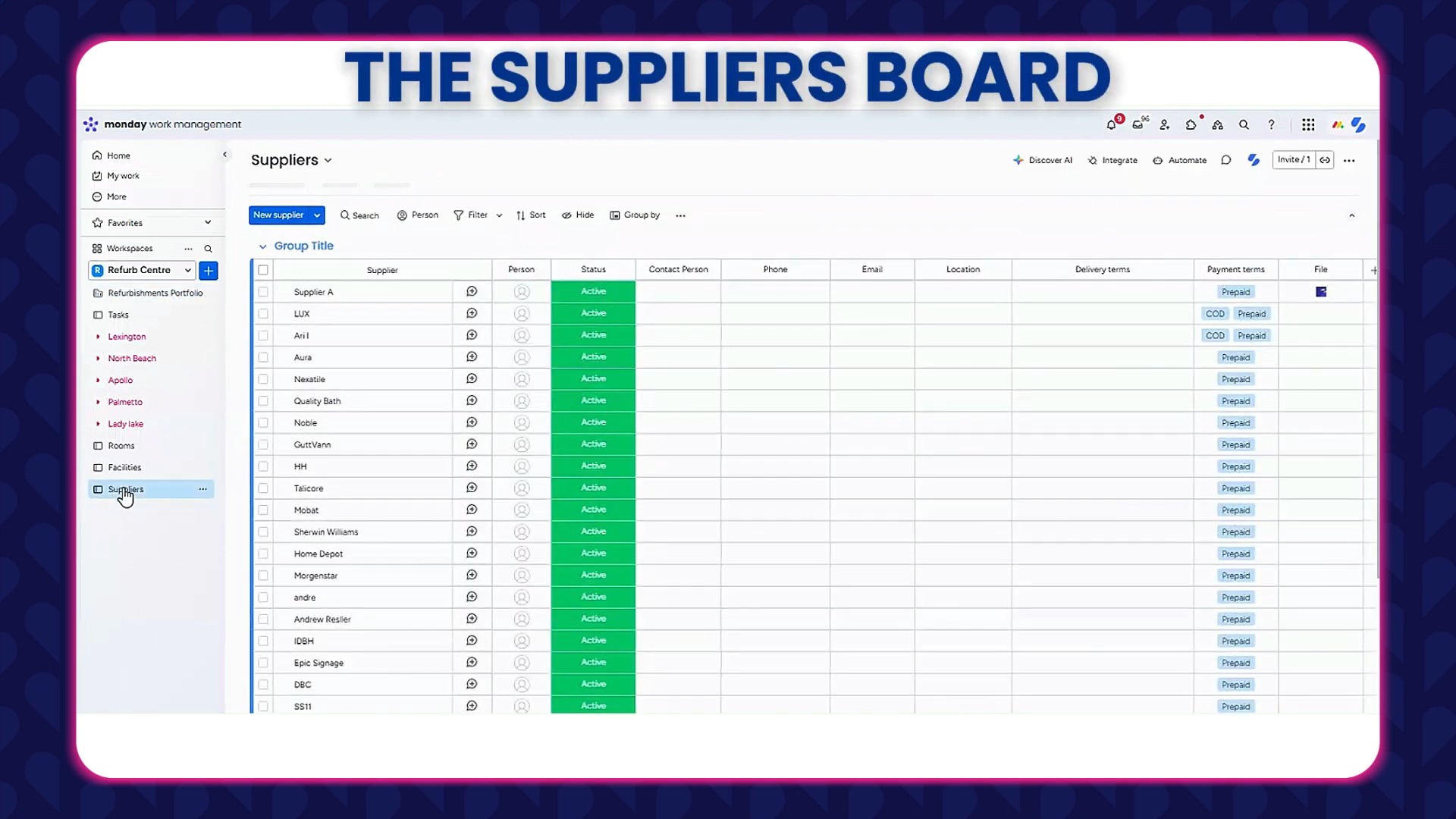
- Facilities Board – This board tracks each nursing home under refurbishment, along with its current stage in the renovation process. It gives a clear, high-level view of every project.
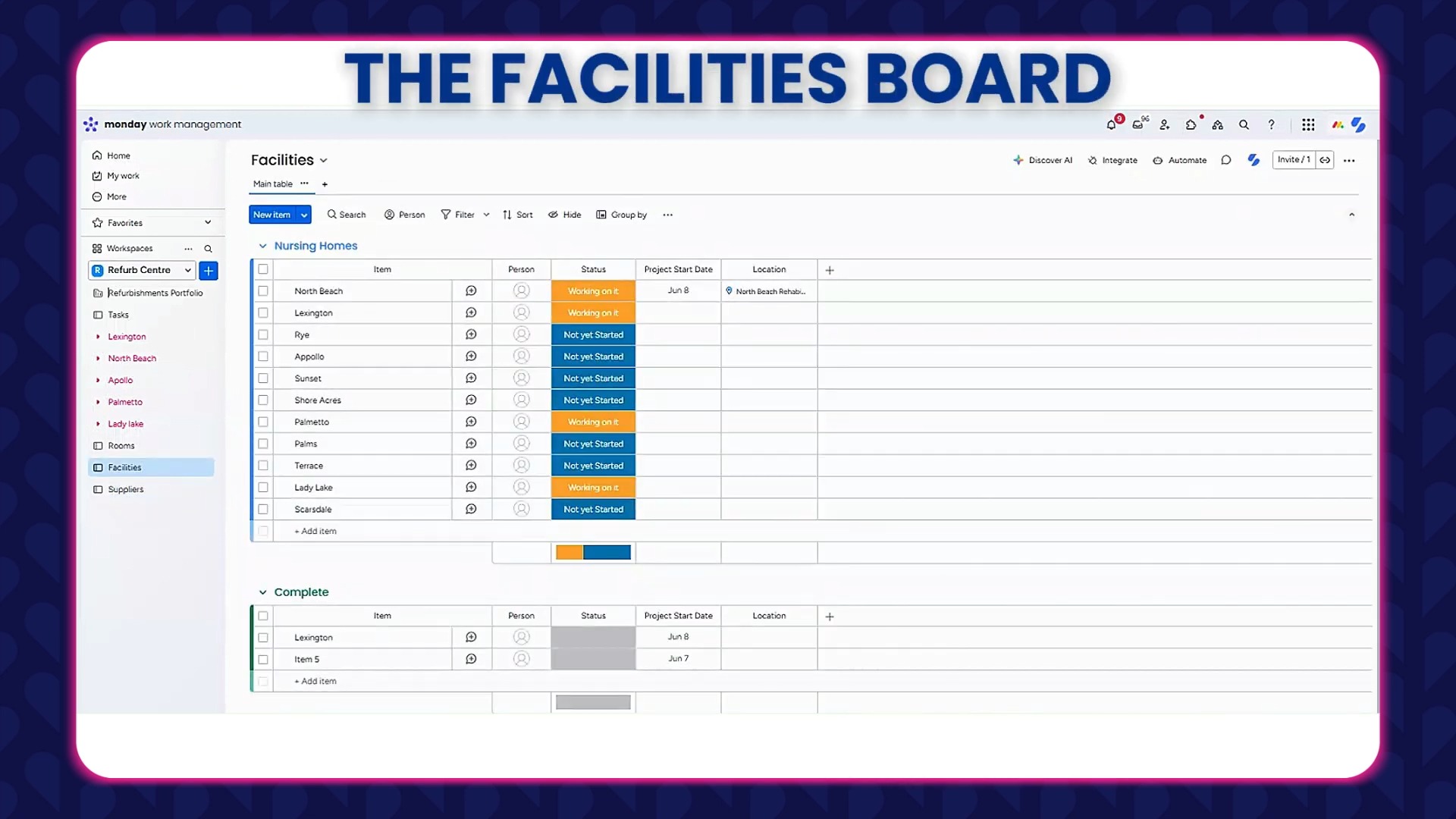
- Rooms Board – Here, each facility is broken down into individual rooms. This level of detail helps teams monitor progress at the granular level and ensures nothing gets overlooked.
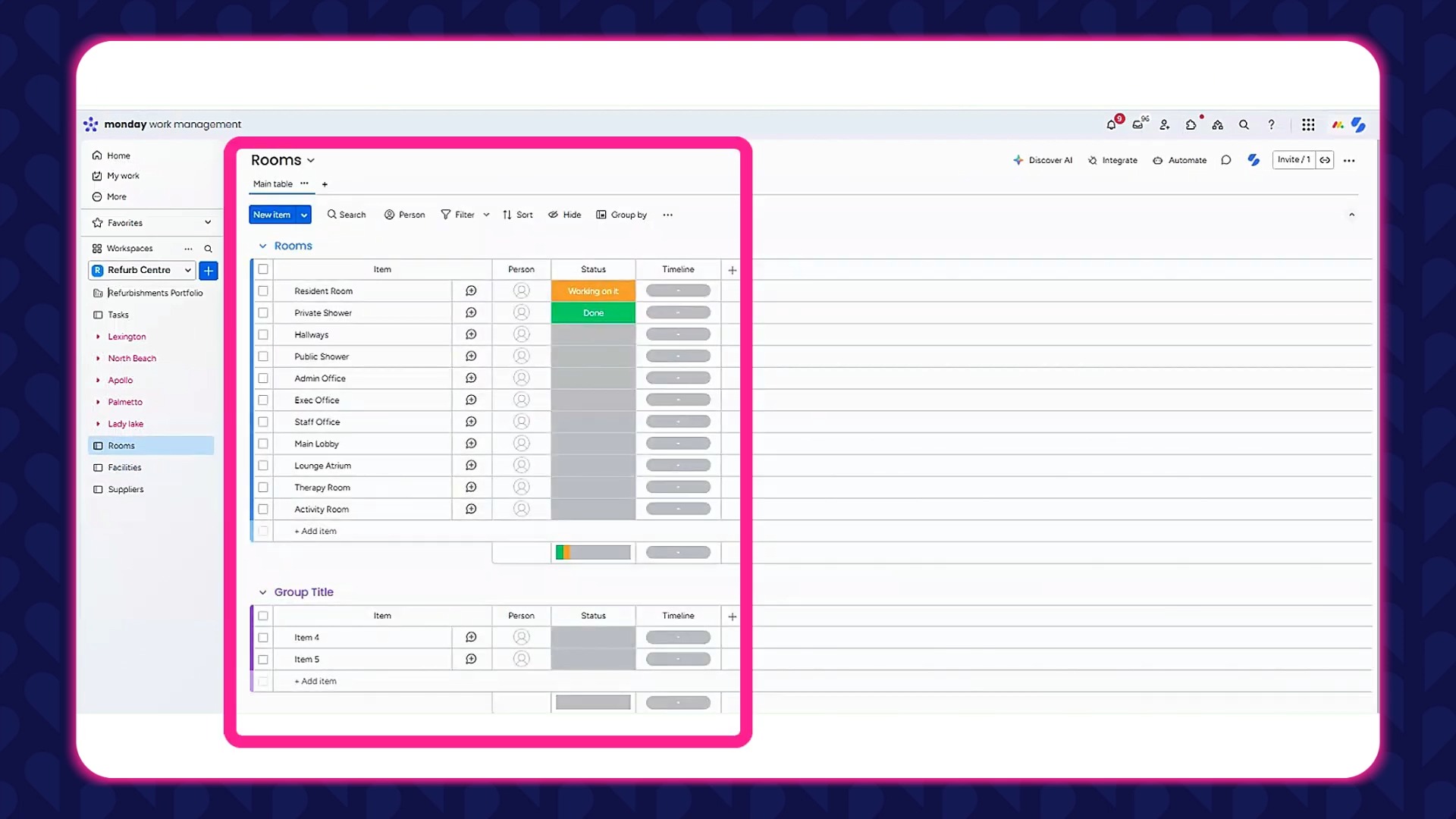
While these boards don’t do the “heavy lifting,” they provide the critical data infrastructure that the rest of the portfolio system relies on.
Core Project Boards Per Facility
For each facility, we created two main boards: a Work/Project Board and a Pricing Board.
The Work or Project Board
At the heart of the portfolio system is the Work Board, the main board that drives each individual project. For this client, the renovation process is broken down into four distinct phases:
- Design Creation
- Materials & Labor Pricing
- Construction Setup
- Active Construction
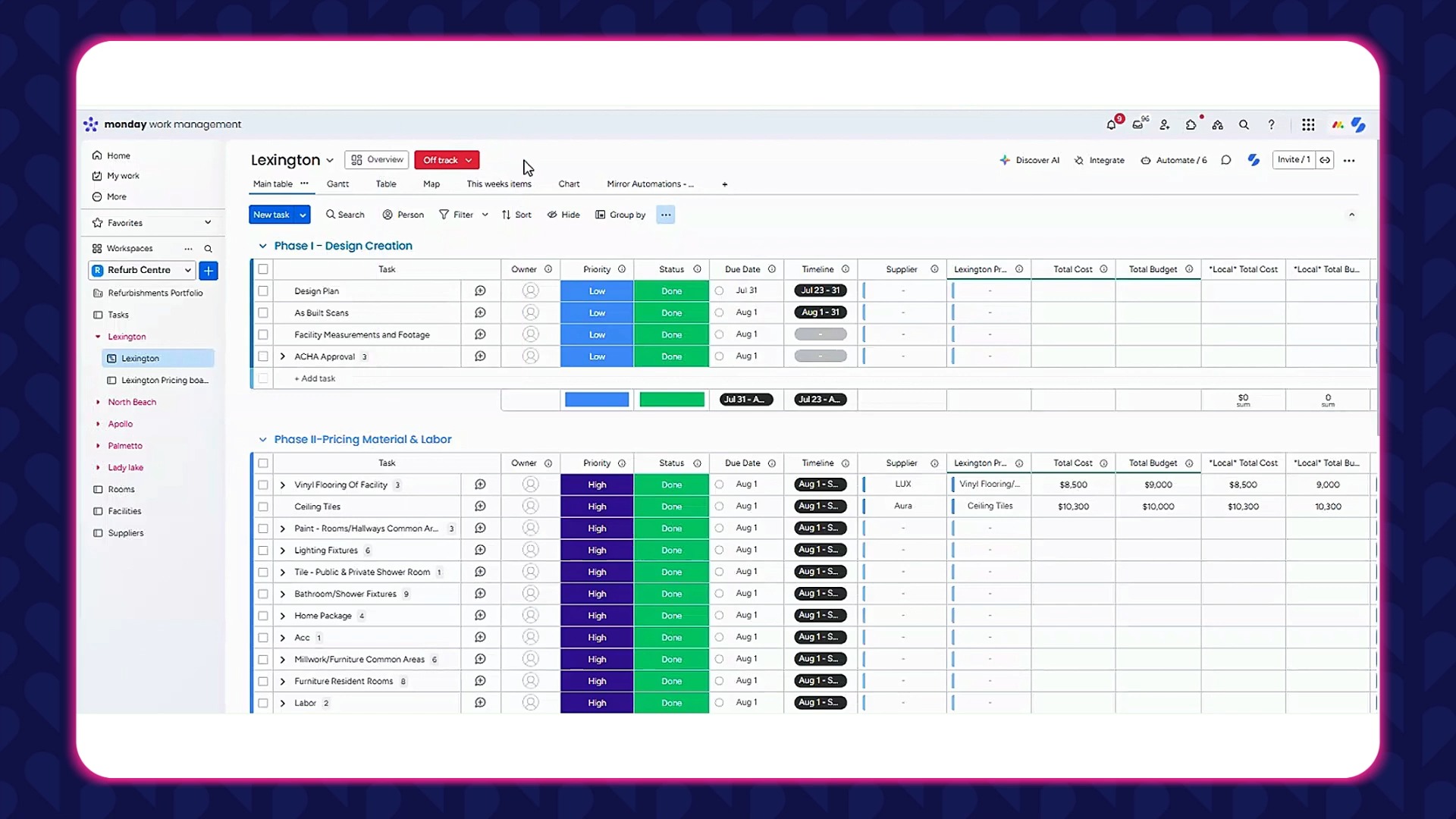
We’ve organized each phase into actionable items, allowing the team to manage tasks with clarity and precision. Every item on the board has key information, including:
- Project Status: On Track, At Risk, or Off Track
- Priority Level: Low, Medium, High, or Critical
- Action Item Status: Current progress toward completion
- Due Dates and Timelines: For scheduling and accountability
- Linked Rooms: Connecting tasks to specific areas under renovation
- Linked Suppliers: Pulling in supplier data from the Suppliers Board
Additionally, the pricing data is fully integrated. We’ve used mirror columns and automation to bring relevant cost information from the Pricing Board, such as unit cost, total cost, and delivery charges, into the Work Board.
To make this data more usable, we also create local fields for key totals like Total Cost and Total Build, allowing for easier calculations and reporting.
Mirror boards and connected boards can sometimes be tricky to manage, especially on a per-site basis, so creating local values ensures smoother performance and a more user-friendly experience.
The Pricing Board
On the Pricing Board, each line item is managed individually, allowing for detailed tracking of costs at every level.
For each item, we link the relevant supplier, as well as the specific room being refurbished. This ensures that every cost is clearly associated with the right vendor and location. Key details, such as square footage, quantity, unit cost, delivery fees, and total cost, are all captured within the item.
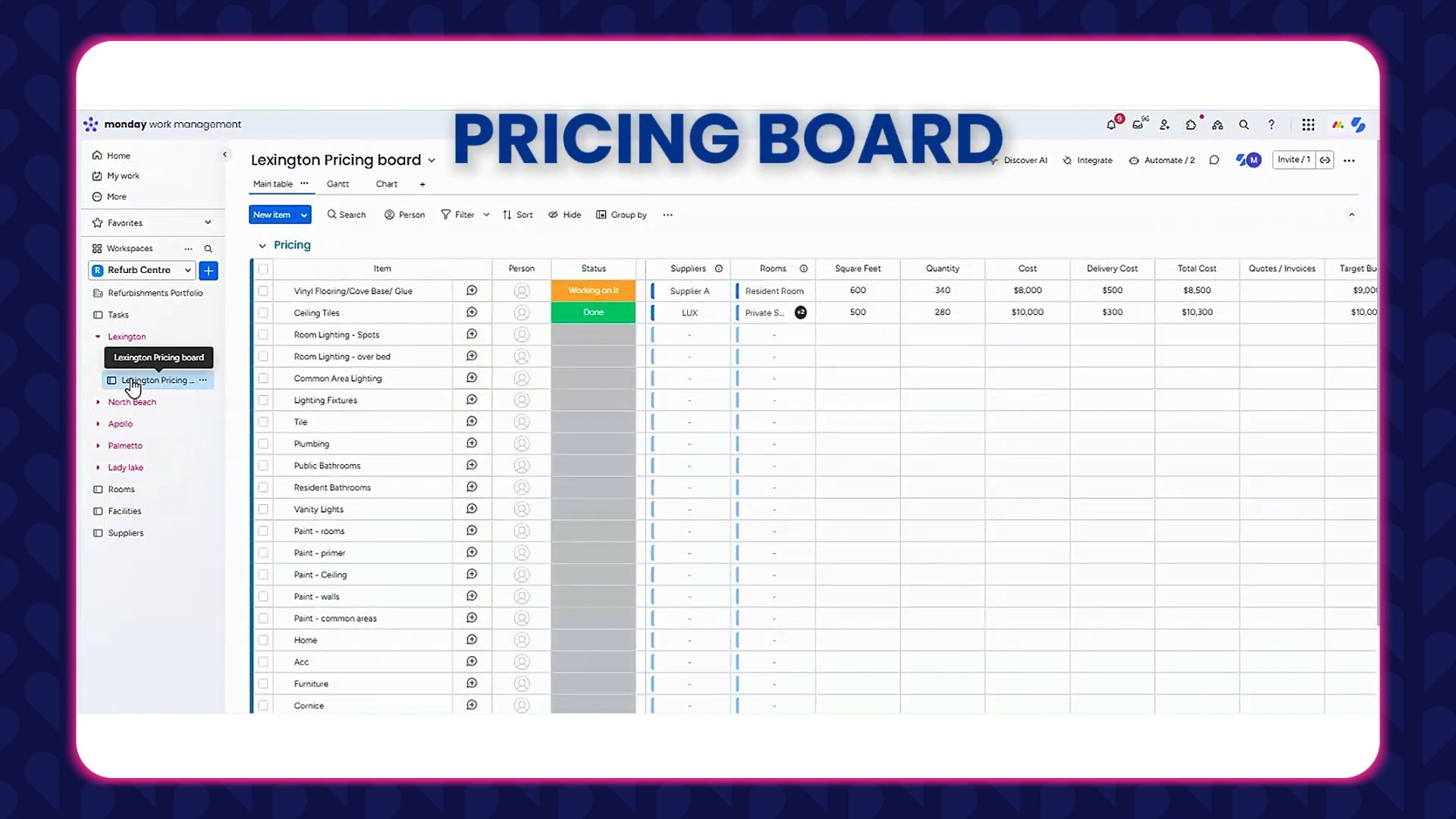
All of this information flows seamlessly into the Work/Project Board, and ultimately rolls up into the Executive Dashboard for high-level visibility and reporting.
Centralized Task Management with the Task Board
At the core of the entire system is the Tasks Board. It’s the central hub that tracks every task from every refurbishment project. This board provides a bird’s-eye view across all active locations, helping the entire team stay aligned and informed at all times.
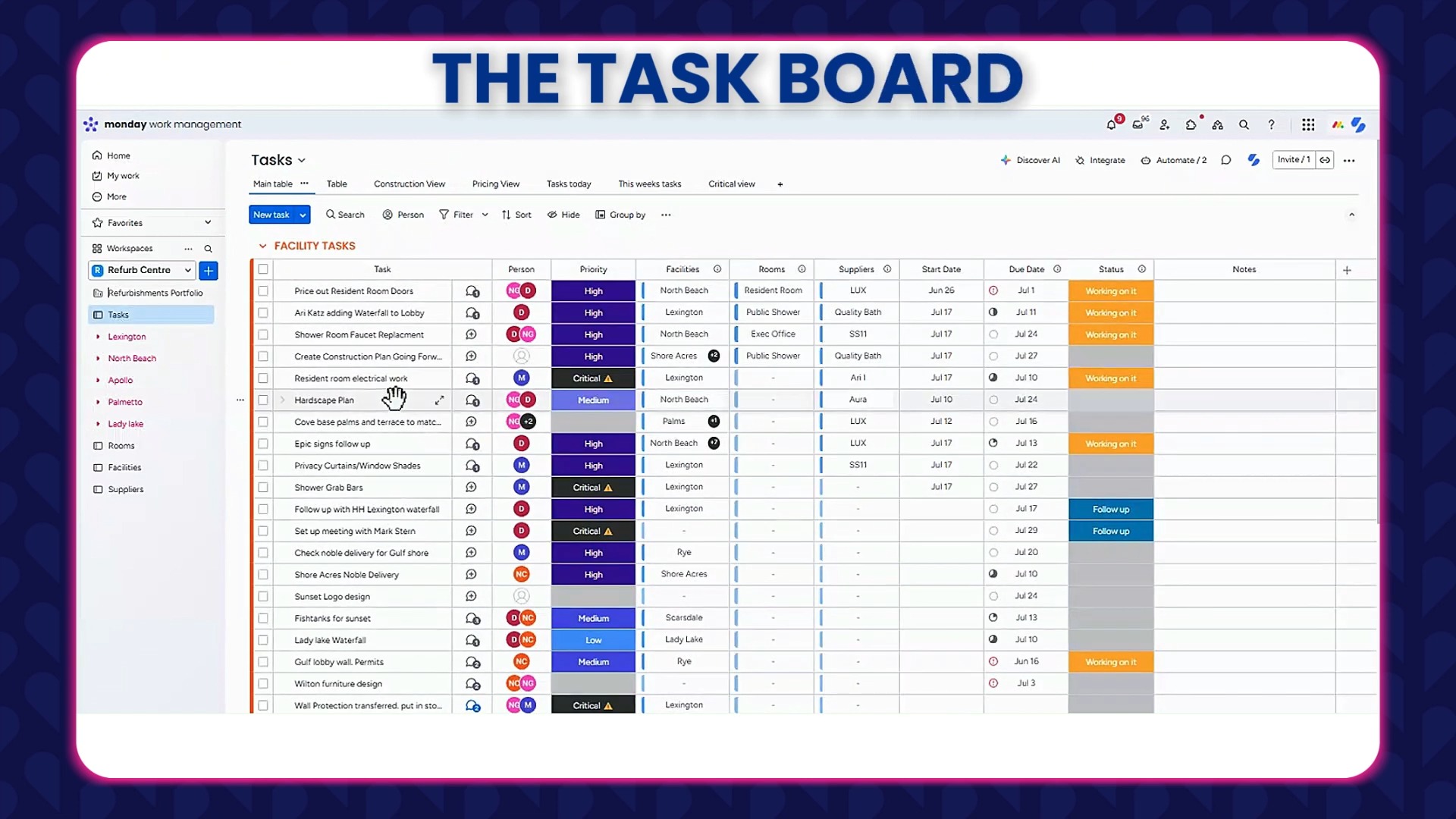
Each row represents a specific task, and displays key details, including:
- Task Name
- Responsible Person
- Priority Level
- Facility Name
- Room
- Linked Supplier
- Start Date & End Date
- Task Status
This structure ensures that anyone can quickly see what’s happening, where it’s happening, and who’s responsible.
To streamline communication and execution, we’ve set up automations that notify the right people when actions are needed or statuses change. The board also features custom views tailored to different roles and needs, such as:
- Construction View
- Pricing View
- Today’s Tasks
- This Week’s Tasks
- Critical Tasks View
These views simplify navigation and focus, which is essential when managing hundreds of tasks across multiple refurbishment projects.
And just like the other boards, all relevant data from the Tasks Board rolls up into the Portfolio Board, giving leadership full visibility into progress at every level.
Executive Oversight – Portfolio Board
The Portfolio Board brings everything together, offering a high-level snapshot of each facility and its current progress. This is where leadership can quickly assess the status of every project across all locations.
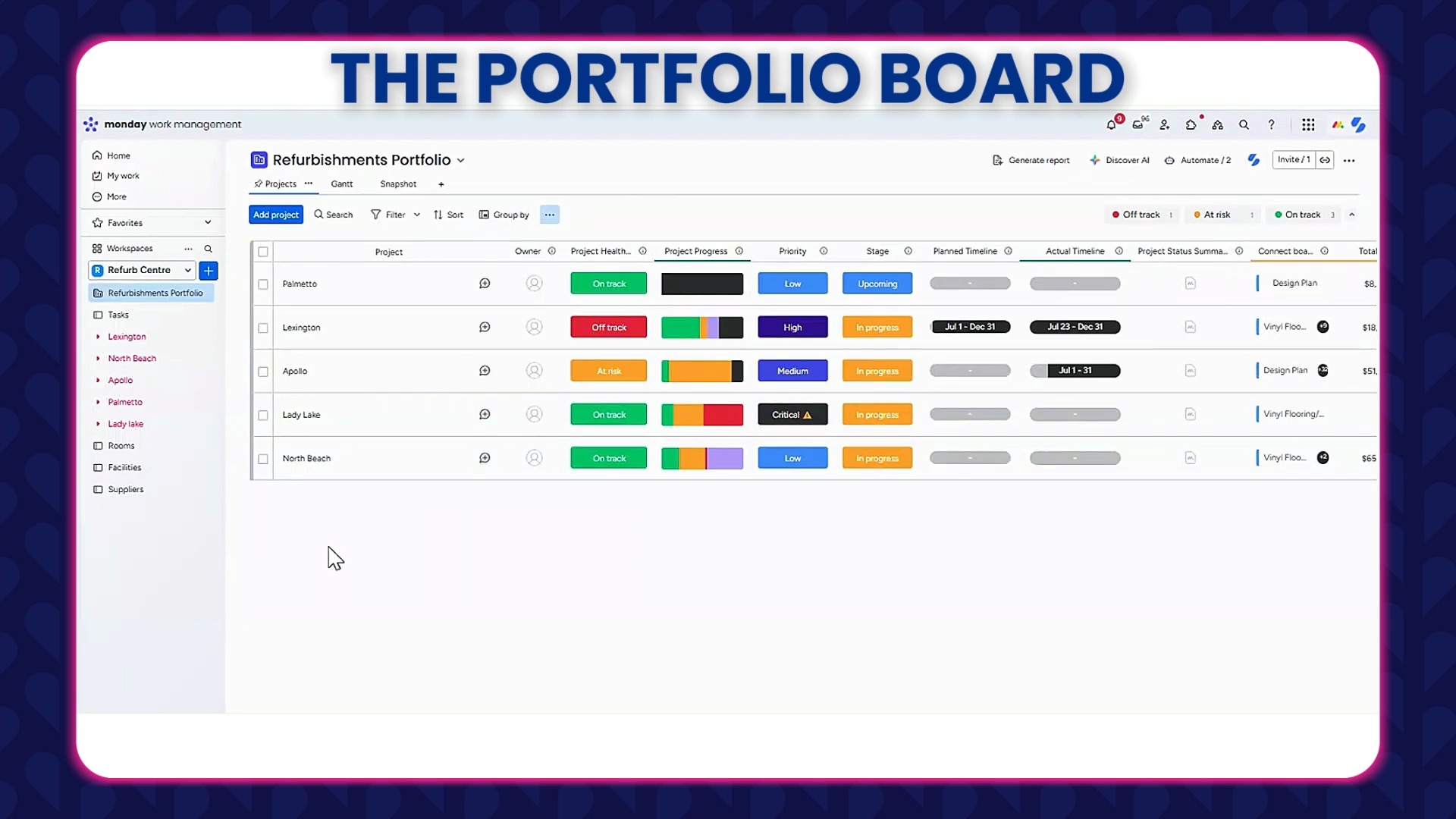
For each facility, the board displays:
- Project Health – A quick indicator of whether the project is On Track, At Risk, or Off Track. For example, the Lexington facility currently has Off Track status.
- Project Progress – This is an aggregated view based on the status of tasks in the Workboard. For instance:
- 47% Completed
- 8.8% In Progress
- 14.7% Scheduled for a Future Phase
- 29% On Hold
- Priority & Status – Management can set or adjust the priority (Low, Medium, High, or Critical) and update overall project status directly from this board.
- Timelines – Leaders can define the expected timeline and compare it against the actual timeline pulled from each facility’s Work Board. This helps identify delays or early completions at a glance.
- Cost Overview – Thanks to the mirror automation, cost data from each project board appears on the Portfolio Board. Here, management can instantly see:
- Total Cost
- Budgeted Amount
- Overall Financial Health of each facility
With this centralized view, decision-makers gain real-time insight into both operational and financial performance across the entire portfolio — streamlining reporting, oversight, and strategic planning.
At Simpleday, we help businesses like yours unlock the full power of monday.com. Let us build a custom system tailored to your workflows, just like we did for this multi-million dollar construction portfolio. Book a free consultation today.



